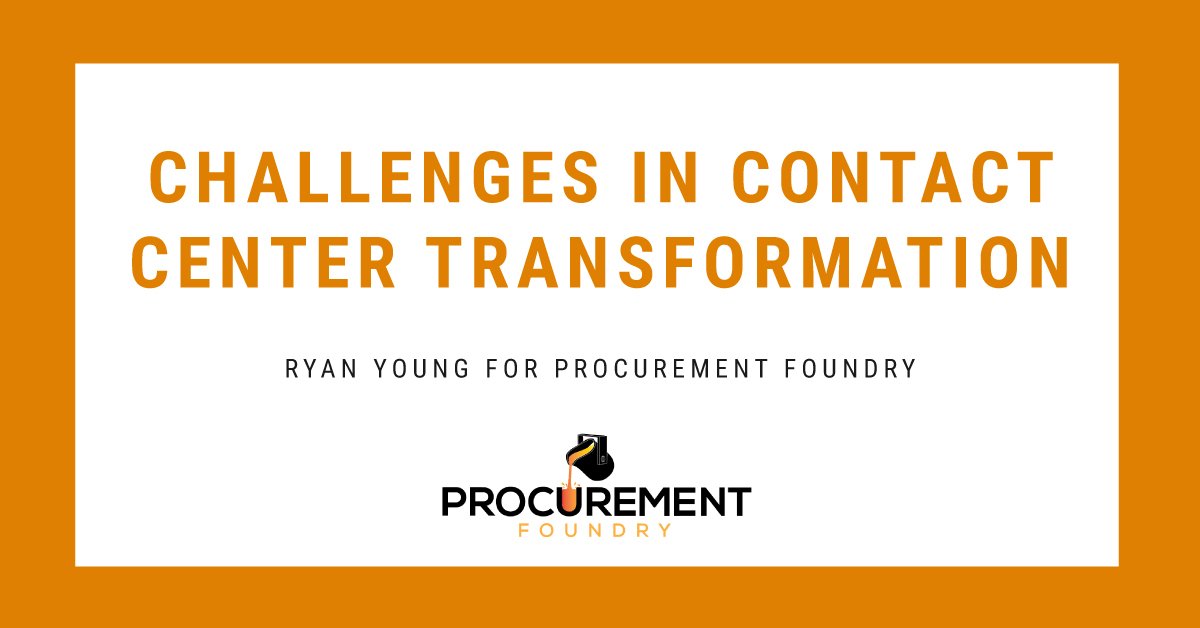Maximizing Savings Opportunities and Procurement's Strategic Value for CPOs
Saving money is not always about pinching pennies: advanced and data-driven insights enable you to identify real cost-saving opportunities, negotiate...

Digital transformation is a leading priority for many businesses, especially now that we’re living in and adapting to a new norm. More companies are moving to online solutions to meet the new demands of their customers. For some, this means adopting entirely new digital business strategies to accommodate the shift.
However, there’s one thing that’s still the same—the need to cut costs and maximize profits, all the while maintaining sustainability. As a CIO, this is your responsibility to take care of, and if you’re like most organizations, then there’s a lot of talk of shifting from legacy systems to cloud-based solutions.
One, in particular, is the move to adopt a contact center as a service (or CCaaS). While this is a potentially great move, it can lead to all sorts of issues if the wrong solution is chosen. So, let’s take a look at some of the challenges businesses face with CCaaS transformation.
The decision to implement CCaaS into your organization is based on several factors. The first may be to cut costs associated with running a call center. This makes perfect sense because CCaaS solutions are cloud-based which can mean – no more paying for equipment or people to run your call center.
However, what happens when the solution you choose lacks several functionalities you needed? The cost to have the system patched together to offer the same features as your legacy system eats up any cost-savings you garnered.
The second challenge is dealing with efficiency. Moving to a cloud-based service because it’s flexible, agile, and scalable is common and can be realized when choosing the right vendor. However, if you make the wrong choice, you could end up with a major problem vs. a solution.
Lastly, there’s the potential challenge of being locked into a long-term contract with the wrong vendor. On the outside, CCaaS vendors may look alike, but when you dive deeper into the backend of their system, you’ll find all sorts of holes. If you don’t catch these before signing a contract, you’ll have to put up with the issue until it ends.
It places the CIO in a delicate situation which is why it’s critical to have a well-developed plan. An unclear plan without executive alignment is likely underfunded. Therefore, it won’t have the appropriate resource commitment (internal and/or external) to execute successfully. The best case is a delayed outcome; the worst case is a failed project that requires a restart.
At first glance, the C-suite will think the wrong vendor was selected. But in reality, the business case never gave it a chance to succeed.
If you don’t know how much material and labor it costs to build a house, and you only give them $500k when they actually needed $1M+, you can blame the contractor all you want, but in reality, it was the forecasting.
Let’s say a company successfully implemented a CCaaS solution. There are still things that can go wrong. For example:
At ACLIVITI, we work together with the CPO, CIO, and CTO during CCaaS transformations to prevent the above challenges. We find that while the C-suite may have different priorities and agendas, they speak a common language—CFO cash flow impact.
We are true experts in CCaaS transformation. We’ve successfully help enterprise-level companies with their transitions. Our professionals know how to build confidence with the C-suite.
We do this by offering business case workshops that include pre-populated assumptions that simplify the business case for the CFO. Using our decision framework (APEX), we create alignment between business leaders, C-suite, and IT.
So, we’re not just your typical advisory consulting firm. We provide program oversight to ensure you get the promised outcome over a multi-year transformation. Reach out to us today to learn more.

Saving money is not always about pinching pennies: advanced and data-driven insights enable you to identify real cost-saving opportunities, negotiate...

The topic of our recent roundtable discussion with a dozen Procurement Foundry community members—exploring potential flaws in procurement incentive...

Every 30 days or so, I get the same alert on my phone—“Your electricity bill is available for viewing.” I take a quick look, make sure nothing seems...